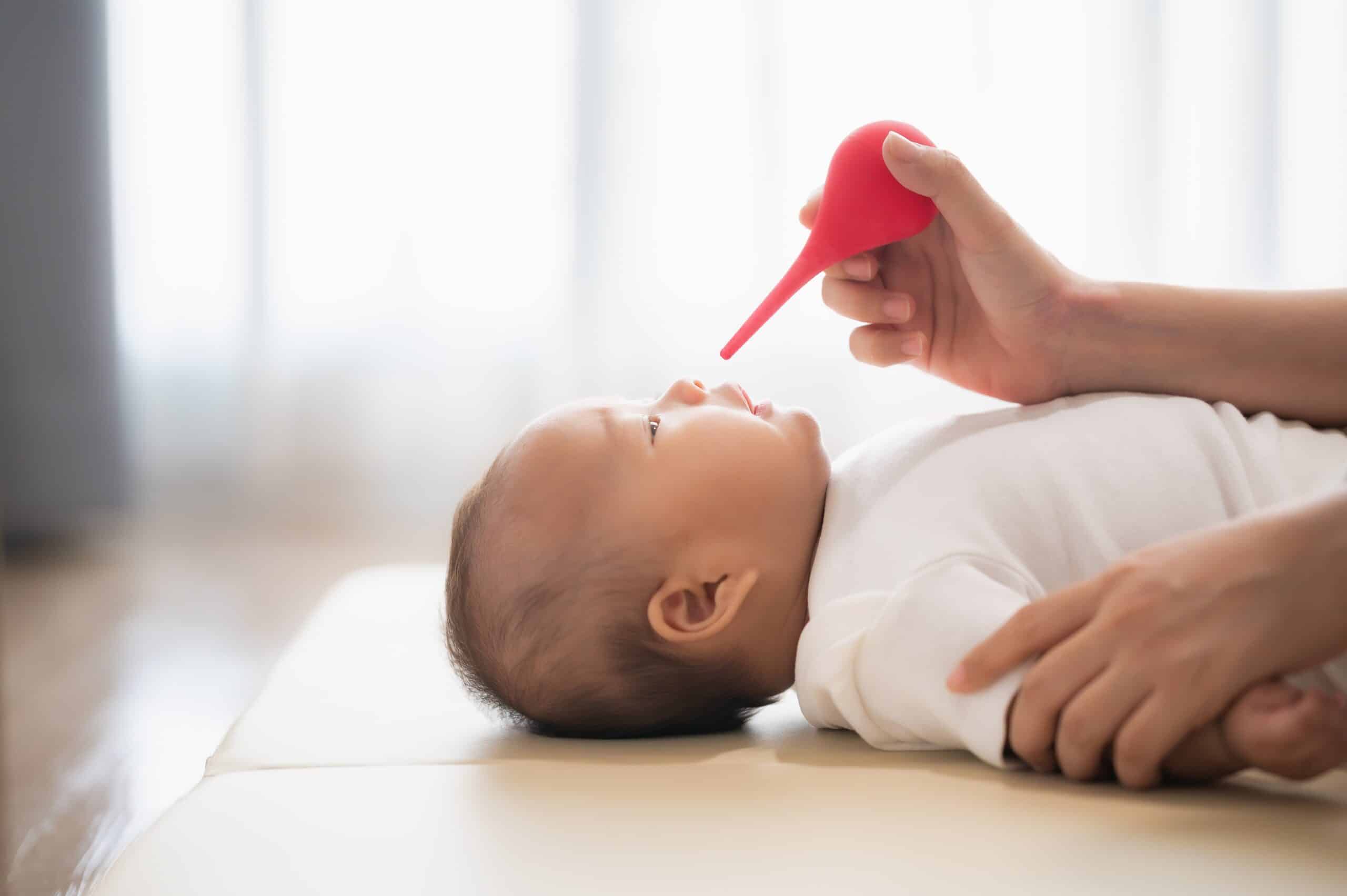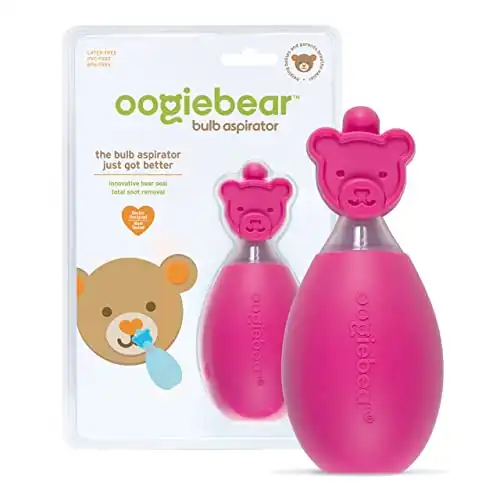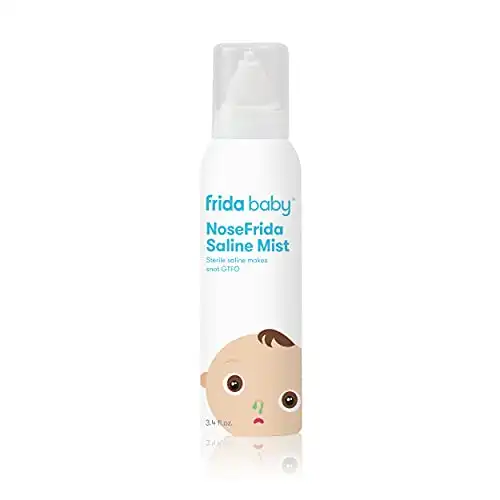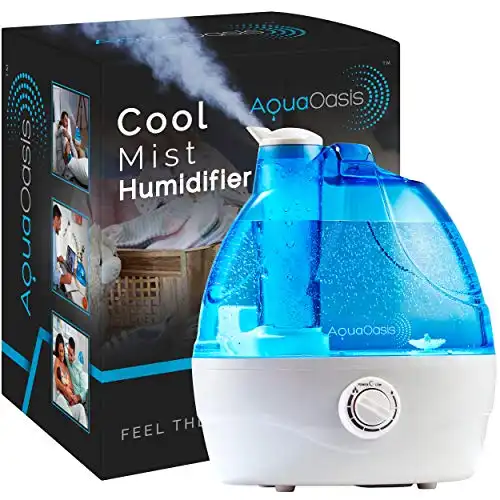Mucus is the continuous fluid that comes from a baby's nose, mouth, and throat. Believe it or not, mucus is actually important for your baby's wellness. The gooey fluid helps to keep their nasal passages, mouth, and throat wet and supple. Babies also benefit from the protective properties of mucus because it acts as a barrier against the entry of harmful bacteria and viruses.
However, sometimes baby mucus buildup can become severe, leading to congestion and excess drainage into the throat. This can cause discomfort and breathing issues for your little one. If this happens, here are 6 home remedies you can try to help remove mucus from a baby’s throat.
Key Points of a Baby's Mucus and Throat Health
- Any tools or sprays used to clear or thin out the baby's mucus should be sterile, baby-safe, and if ever have any doubts consult your doctor first.
- Sometimes your baby may just have extra mucus and all it requires is a close eye on your child's button nose.
- If the problem persists or feels abnormal consult your doctor as it may mean there is something else going on besides a stuffy nose.
How To Remove Mucus From a Baby’s Throat: 6 Home Remedies
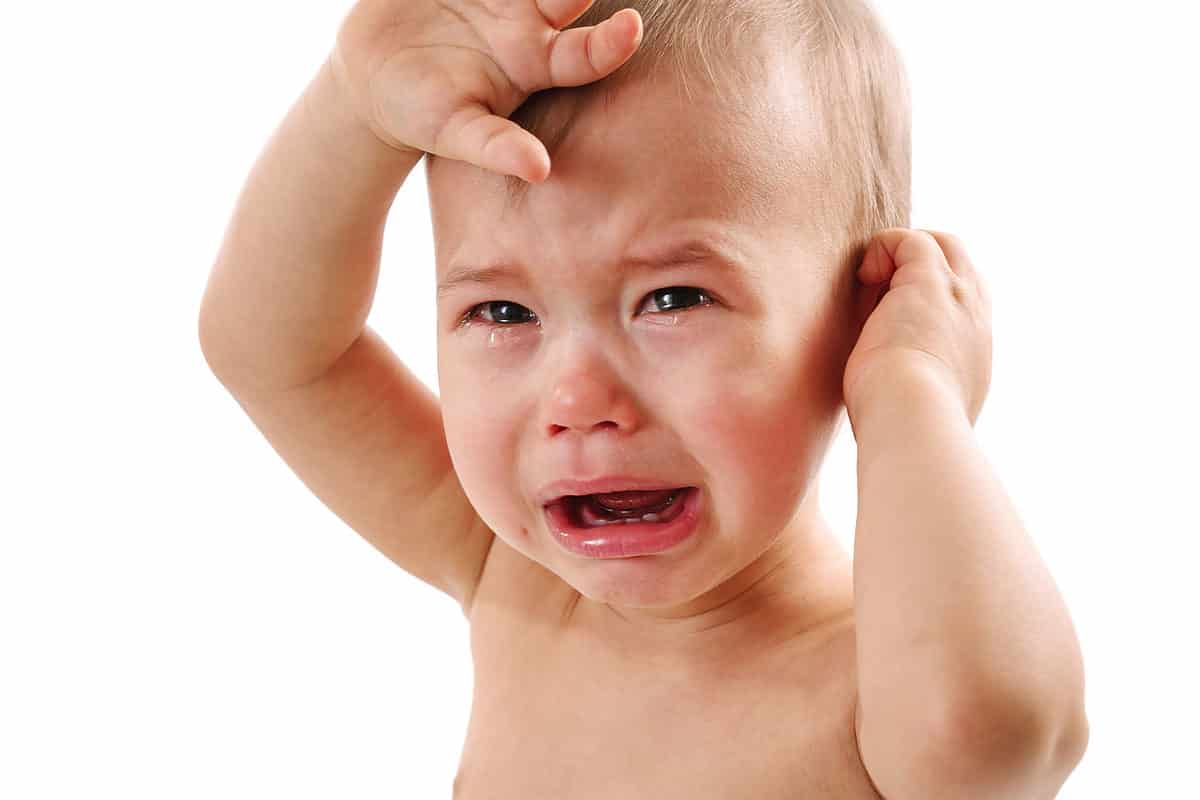
©iStock.com/Jun
Unfortunately, sometimes externally wiping a baby's nose with a tissue or soft cloth isn't enough. Thankfully, there are certain home remedies you can attempt to help gently and successfully remove the snot if it is thick, copious, and draining into the baby's throat.
1. Use A Rubber Bulb Syringe To Suction Out The Mucus
A rubber bulb syringe is a dependable and gentle method of removing excess mucus from a baby. If you're going to use one, make sure it's clean and sterile. The suctioning of mucus should not be done too forcefully. Your baby still requires some snot for his or her health. Put down the suctioning tool and give your baby a break if he or she seems disturbed while you're trying to remove mucus. They may be suffering from a scratchy throat or a runny nose.
- Ideal for use on both nose and ear
- Latex-free silicone won't irritate baby skin
- Disassembles for easy and thorough cleaning
- Doctor-designed
2. Use a Saline Spray to Loosen Dry Mucus
To dilute thick mucus, you can place a couple of drops of saline solution in your baby's nose prior to suctioning. Only a nasal spray made of saline solution should be used on newborns, infants, or toddlers. For your baby, it's better to choose an all-natural saline or one that is specifically marketed to infants and toddlers. To use, put the infant on his or her back and gently tilt his or her head back (do not force this). Then, put the recommended number of drops (typically two or three drops) of saline in each nostril.
- Loosens mucus and phlegm for easier removal
- Simple formula contains only water and salt for a true saline solution
- Can be used in advance of bulb syringe to ease in removal
3. Use A Cool-Mist Humidifier
Place a cool-mist humidifier in the nursery to maintain a comfortable level of humidity. A newborn should never be near a warm air humidifier because the air it emits can be hotter than normal. The usage of a cool mist humidifier has numerous benefits, including the reduction of airborne viruses, the alleviation of allergy, sinus, and viral symptoms, and the treatment of dry skin or chapped lips. But remember to keep the machine clean on a regular basis to prevent the growth of mold.
- Ultrasonic humidifier prevents mold build up
- Silent operation means it won't disturb light sleepers
- Ideal for nursery use
- Multiple settings provide a tailored approach
- Instant relief of from dry air
- 360-degree rotating nozzle provides even humidity distribution
4. Feed Baby Regularly

©iStock.com/kieferpix
Babies need to be fed on a regular schedule to ensure they get enough fluids. Make an appointment with your child's doctor if you see that he or she is not gaining weight as expected and you want to talk about possible causes. If you're breastfeeding exclusively and your baby is having trouble latching, you may want to seek the advice of a lactation consultant.
5. Remove Potential Allergens and Pollutants
Air pollution and allergies are more widespread than most people realize. Cleaning up dust and pet hairs with a vacuum on a regular basis can help prevent these allergens from aggravating your infant's mucous problems. It's also crucial that no smoking be done within the house. As a bonus, this can help keep your baby's immune system healthy and free from respiratory problems like allergies and asthma.
Cleaning hardwood floors with a good disinfectant every day is a must. Carpets should be vacuumed once a week, if not more often. In a perfect world, you'll be wiping down your floors with disinfectant every day once your kid begins crawling. Carpet makes this less of an issue, but if your floors are hard, you should factor it into your regular cleaning routine.
Of course in a parent's busy schedule, this may not be possible. It might be worth it to invest in a cleaning service once a week or a Rumba or other automated cleaner. Just make sure to introduce it in a safe way to your now-crawling baby and keep an eye on both just in case.
If You Have Pets
It's best to keep pets off of the furnishings your child might use for sleeping or playtime. Try to get your pets to sleep in their own beds, with their own bedding, particularly away from the baby's room. If you have a pet, their bedding should be washed at least once a week.
If you have a cat, make sure the litter box is located in a secure location that is out of the way of your child's play areas. If you want your cat and baby to stay healthy, you need to take care of their litter box by washing it out once a week and replacing the litter frequently. The litter should be scooped at least once a day. Avoid having over two cats sharing the same box.
6. Gently Rub and Pat Their Back
Rubbing or patting your baby's back is helpful for more than just easing gas pains. You can help gravity get rid of some mucus by putting your baby on your knee and gently rubbing his or her back. Just be sure to be ready to wipe if the smallest Niagara Falls comes falling into your lap.
The image featured at the top of this post is ©interstid/Shutterstock.com.
